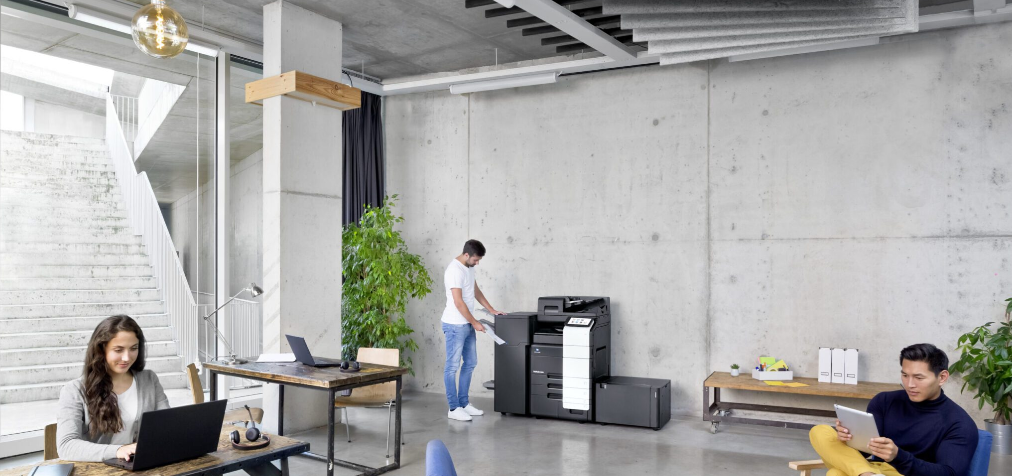The future of office printers arouses both curiosity and debate. In this article, we offer an overview of the future evolution of these indispensable tools, both in terms of the latest technological trends and ecological challenges.


Current state of the office printer market
The office printer market is influenced by several key trends, not least a growing demand for eco-responsible solutions. As we see on a daily basis, users and companies are increasingly concerned about their environmental impact. They are looking for products that minimize energy consumption and waste. However, the quality of products and associated services must not be compromised, as productivity remains a priority for business success.
That's why CK and our long-standing partner Konica Minolta are constantly looking for ways to innovate in a sustainable way, using recycled materials, saving energy, reducing travel and offering cartridge recycling programs, for example.
Environmental impact of office printers
The environmental impact of printers includes energy consumption and waste production. Konica Minolta reduces this impact with energy-efficient printers designed with a maximum of recycled materials. Adopting sustainable consumables and recycling also contribute to a greener approach to printing.
At CK, we have chosen to propose a "Refresh offer", enabling our customers to turn to reconditioned printers. This is a practice to which we have been committed for many years, but which today deserves to be given even greater prominence. This approach is in line with the offers we are putting in place to meet the requirements we have set ourselves as part of our social and environmental responsibility.
What does the future hold for office printing?
The impact of teleworking and digitalization is transforming the use of office printers. Printers need to offer better connectivity, enabling remote printing and document management via the cloud.
Future demand for physical printers is uncertain. On the one hand, digitalization could reduce dependence on traditional printers. On the other hand, the evolution of A3/A4 multifunction printers is increasingly present in modern offices. Our observation: today, we're more inclined to recommend printing solutions that rationalize costs. This means fewer devices in the office, and an emphasis on higher-volume printers designed for more users. Mobile printing systems, enabling printing on any device via a badge authentication system, also help to regulate the number of prints and avoid over-consumption.
Manufacturers also need to have a wide range of equipment to suit all environments, both in terms of workspace and function. Konica Minolta's multifunction printers are perfectly suited to all kinds of workplaces, whether in a small room, a corridor or a large warehouse.
Conclusion: Are office printers ready for a major transformation?
The future of office printers is marked by technological innovations and changes in workplace practices. With all these constant innovations, and despite the need to adapt to new market demands, they continue to play an essential role in our working environments.
Among CK customers, print volumes remain fairly stable from year to year, despite the desire of some companies to become "paperless" and taking into account all digitalization solutions, printers remain an important tool in the working environment.












